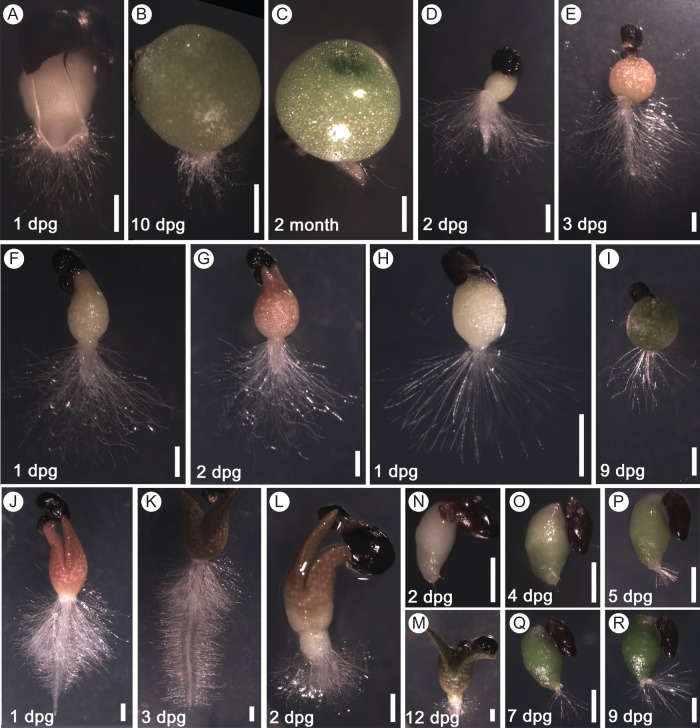Fig. 1.
Determinate primary root growth in seedlings of the Cactoideae subfamily. (A–C) Stenocactus crispatus, Cacteae tribe; (D, E) Melocactus matanzanus, Cereeae tribe, (F, G) Trichocereus candicans, Trichocereeae tribe; (H, I) Parodia ayopayana, Notocacteae tribe; (J–M) two types of seedlings of Pachycereus schottii, Pachycereeae tribe: a seedling of the first type (J, K) exhibited a longer primary root and of the second type (L, M) had a very short primary root; (N–R) Rhipsalis floccosa, Rhipsalideae tribe. (A, F, H, L) Primary root growth of S. crispatus, T. candicans, P. ayopayana and the second type of P. schottii seedlings, respectively, was terminated by 1 dpg. (B, G, I, M) The shoot of S. crispatus, T. candicans, P. ayopayana and the second type of P. schottii seedling, respectively, continued to develop after primary root growth ceased. (C) The same S. crispatus plant as in (A) and (B) developed a couple of short lateral roots with determinate growth by the age of 2 months. (D, J) The growing primary root of M. matanzanus at 2 dpg and of the first type of P. schottii seedling at 1 dpg. (E, K) Primary root growth of M. matanzanus and of the first type of P. schottii seedlings stopped by 3 dpg. (N, O) The primary root of the Rhipsalis floccosa seedling essentially did not develop; the same seedling is shown. (P–R) The first and second very short lateral roots developed by 5 and 9 dpg, respectively, and both exhibited a determinate growth pattern. Scale bars = 1 mm.

